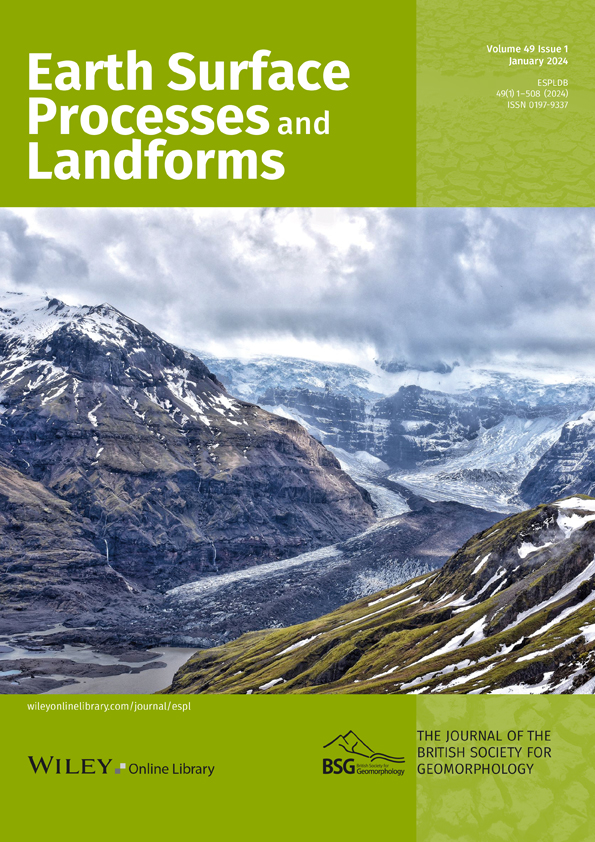Evolution characteristics of mid-channel bars with a typical high/low bank structure in the Middle Yangtze River
Abstract
Adjustments in mid-channel bars (MCBs) often influence the stability of channel regime and the safety of river navigation in anabranching reaches. This study aims to investigate the evolution characteristics of the low and high parts of MCBs (L-MCBs and H-MCBs) in the Middle Yangtze River (MYR) and reveal the main factors influencing the deformation of these two components. Results show that the total exposed area of L-MCBs decreased from 305 to 288 km2 in 2003–2019, whereas the H-MCBs remained relatively stable. Taking the Nanyang bar with a typical high/low bank structure as an example, the deformation of the L-MCB mainly occurred in the head zone, while the deformation of the H-MCB was characterised by bank retreat in the tail zone and floodplain deposition on the top of the H-MCB. In terms of influencing factors, the impacts of the altered flow–sediment conditions and the MCB's properties (soil composition and morphology characteristics) on the Nanyang bar deformation were investigated. On the one hand, the reduction in sediment concentration was the most direct factor causing the shrinkage of L-MCBs, and the decrease in flood occurrence frequency made the deformation of H-MCB less significant. On the other hand, the soil composition of the L-MCB primarily consisted of fine sand with weak erosion resistance, while the large content of cohesive sediment made the H-MCB difficult to be eroded by overbank flows; moreover, the riverbank of the H-MCB in the bar-tail zone was much steeper than that in the bar-head zone, causing the deformation of the high part to mainly occur in the tail zone. Furthermore, the deformation of the high part was simulated using a bank erosion model at section scale, and the calculated safety factors of riverbank at a typical cross-section show that the riverbank of the H-MCB was the most unstable during the receding period.
Open Research
DATA AVAILABILITY STATEMENT
The data that support the findings of this study are available from the corresponding author upon reasonable request.




